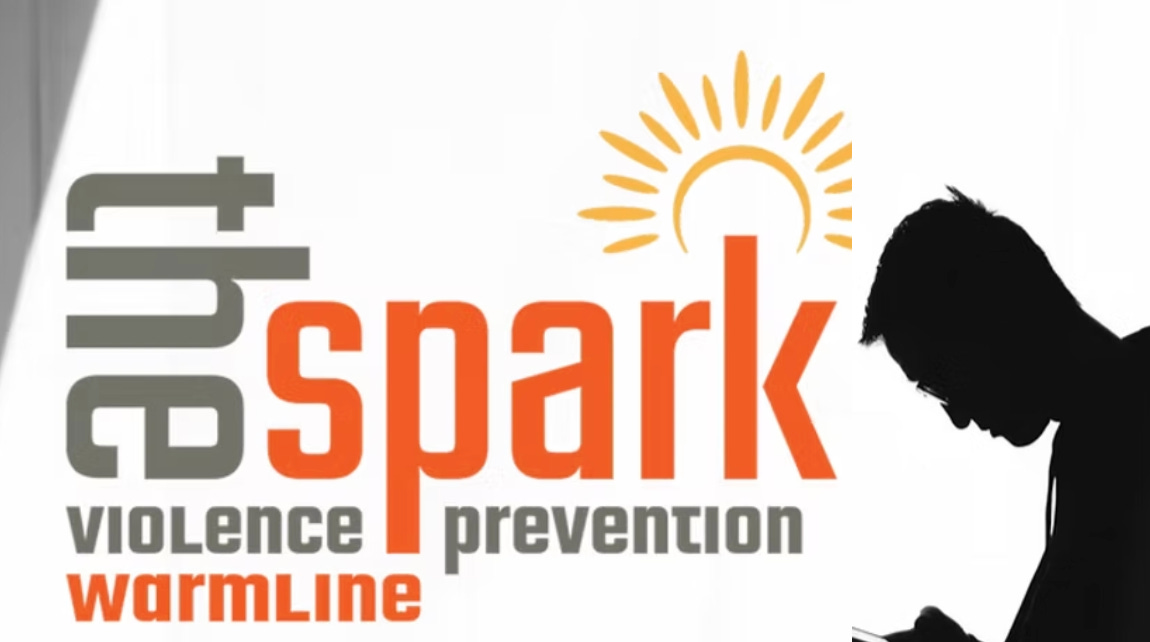Vermont's "The Spark" Program Expands, Offering New Path for Domestic Violence Intervention
The stated aim of The Spark is to “curb domestic violence.” As the program expands, a critical question for policymakers and the public will be how to measure its effectiveness.
A phone “warmline” for individuals who have caused harm in their relationships is expanding statewide, aiming to provide a new, confidential resource for domestic violence intervention in Vermont.
The program, known as The Spark, is operated by Umbrella, a St. Johnsbury-based organization focused on domestic and sexual violence prevention. Originally launched in the spring of 2023 as a pilot program for the Northeast Kingdom, the service is now available to all Vermont residents.
The Spark is framed as a voluntary, non-judgmental, and confidential resource for individuals who are concerned about their own harmful behavior. It is not a 24-hour crisis hotline, but a “warmline” staffed by trained responders from 10 a.m. to 10 p.m., seven days a week. According to program materials, the goal is to help callers build “safer” skills and connect them with other resources, existing outside the traditional criminal justice system.
A New “Front Door” for Accountability
The Spark is the second program of its kind in the nation, modeled after A Call for Change, a helpline that launched in western Massachusetts in 2021.
Responders for The Spark are not clinicians. Instead, they are trained to engage callers in a model of “compassionate accountability,” helping them identify harmful patterns and develop strategies for de-escalation and safer, healthier relationships. The service is free and anonymous.
Initial funding for the program and its expansion has been provided by the Vermont Community Foundation and the state Department of Health, the latter through a federal grant from the Centers for Disease Control and Prevention (CDC) aimed at addressing health disparities.
Beyond the “Warmline”: An Integrated System
While The Spark is presented as an alternative to “punitive responses,” analysis of Vermont’s intervention landscape reveals a more integrated and sophisticated model. The same organization, Umbrella, operates both this new voluntary warmline and a key component of the formal, court-mandated system.
“The Spark”: The voluntary, anonymous “front-door” program for individuals who self-refer.
“Ignite Change”: A 26-week, state-certified Domestic Violence Accountability Program (DVAP) run by Umbrella. DVAPs are the primary, formal intervention for individuals who have been mandated by the criminal justice system or child-welfare services to address their abusive behavior.
Both programs are overseen by the same leadership at Umbrella. This structure suggests The Spark is not intended to replace the formal system, but to create a “continuum of accountability.” It acts as a new, voluntary entry point for individuals who are not yet in the criminal justice system, while also serving as an additional resource for those already enrolled in the mandated “Ignite Change” program.
A 2024 report from the Vermont Domestic Fatality Review Commission confirms this integrated approach, noting that participants in the formal Domestic Violence Accountability programming were “encouraged to make use of The Spark as an ongoing resource.”
Statewide Support and Survivor-Advocacy Endorsement
A key, but often unstated, aspect of The Spark’s model is its acceptance and endorsement by Vermont’s established survivor advocacy community. Far from operating in a silo, the program is embedded within the state’s official network.
Vermont Network Against Domestic and Sexual Violence: Umbrella is a long-standing member organization of the Vermont Network, the state’s official coalition of 15 survivor advocacy organizations.
Domestic Fatality Review Commission: The state’s 2024 report from this commission, which includes members from the Vermont Network, stated it was “very pleased” The Spark was being offered and called it part of a “national movement to offer non-criminal responses that are restorative in nature.”
Peer Organization Support: Other survivor advocacy groups, such as AWARE, Inc., which serves several Vermont counties, have begun listing The Spark as a statewide resource for the public.
This buy-in from the survivor advocacy community represents a significant validation of the program’s safety and its potential role in a broader, community-wide prevention strategy.
Measuring Success: Activity vs. Impact
The stated aim of The Spark is to “curb domestic violence.” As the program expands, a critical question for policymakers and the public will be how to measure its effectiveness.
During its first year as a pilot, the program self-reported receiving approximately 50 calls. This is a process metric, which measures program activity. It shows that people are aware of and willing to use the service.
However, this is different from an outcome metric, which would measure the program’s actual impact on behavior—such as independently verified reductions in violence or lower recidivism rates among callers. Currently, no long-term, independent outcome data exists for this model, either in Vermont or for its Massachusetts predecessor, “A Call for Change.”
At present, The Spark is best understood as a promising experiment. It tests the hypothesis that a confidential, non-punitive, and voluntary resource can successfully engage people who cause harm before they enter the criminal justice system, thereby helping to prevent violence.
What Happens Next
With its statewide expansion, The Spark moves from a small-scale pilot to a significant component of Vermont’s domestic violence prevention strategy.
Stakeholders will be watching to see if the increased visibility and accessibility lead to a corresponding increase in call volume from across the state. The program’s success will depend on its ability to build trust with a population that is often isolated and resistant to seeking help.
For the long term, the program and its funders will face the challenge of moving beyond measuring activity (how many calls) to measuring impact (if violence was reduced). This will require a deeper, more formal evaluation to determine if this innovative model can achieve its ultimate goal of creating safer partners, safer families, and safer communities in Vermont.



